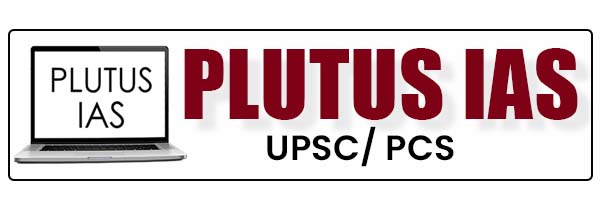09 Jan Updated Pharma manufacturing rules under Schedule M of drugs and Cosmetic Rules, 1945
This article covers ‘Daily Current Affairs’ and the topic details of ‘Updated rules under Schedule M of drugs and Cosmetic Rules, 1945’ This topic is relevant in the “Government policies and Industrial growth” section of the UPSC CSE exam.
Why in the News?
The Ministry of Health and Family Welfare (MoHFW) notified the updated rules under Schedule M of the Drugs and Cosmetics Rules, 1945, in the Gazette of India in order to improve conformity to quality standards. Schedule M defines good manufacturing practices (GMP) for medicinal products.
What are Good Manufacturing Practices (GMP)?
In India’s pharmaceutical business, Good Manufacturing Practices (GMP) are regulatory norms and standards defined by the Central Drugs Standard Control Organisation (CDSCO) and the World Health Organisation (WHO). GMP guarantees that pharmaceutical goods are produced and regulated in a consistent manner to fulfil the quality requirements necessary for their intended use. GMP was first included in “Schedule M of the Drugs and Cosmetics Rules 1945” in 1988, with the most recent update in 2005. Here are some important characteristics of GMP in the Indian pharmaceutical industry:
- Quality Management System (QMS): GMP compliance requires a strong quality management system. Proper Documentation, control of quality, quality assurance, and a dedication to continual development are all part of this.
- Premises and Equipment: GMP rules require pharmaceutical manufacturing plants to have appropriate and well-maintained sites and gears. The facilities’ design and layout should limit cross-contamination and make thorough cleaning easier.
- Documentation and record keeping: Thorough and accurate documentation is an absolute must. This comprises batch records, standard operating procedures (SOPs), validation records, and other manufacturing-related documents.
- Personnel: GMP compliance requires adequately trained and competent personnel. GMP principles, hygiene standards, and particular procedures related to their roles should all be covered in training programmes.
- Production and Process Control: Pharmaceutical manufacturing processes must be well defined and regulated, according to GMP norms. This includes using tested methods, monitoring crucial parameters, and handling raw materials and finished products properly.
- Quality control mechanisms must be in place in order to guarantee the quality of raw materials, intermediary compounds, and finished products. This includes testing, sampling, and evaluation in accordance with established processes.
What is the Need for the Revised Rules of the Schedule M of Drugs
- This would put India’s GMP standards in line with worldwide standards, particularly those set by WHO, and assure the production of drugs of globally acceptable quality
- Previously, the Ministry established a 6-month timetable for small firms and a 12-month deadline for large units to get WHO-GMP certification.
- In order to keep up with the rapidly changing manufacturing and quality domains, it was necessary to revisit and amend the GMP principles and concepts mentioned in the present Schedule M.
Amendments to the Revised Schedule M Drug Rules are –
- The changes addressed in the updated Schedule M include the addition of –
1) Pharmaceutical quality system (PQS)
2) Quality risk management (QRM)
3) Product quality review (PQR)
4) Qualification and validation of equipment
5) Computerised storage system for all drug products.

- The updated Schedule M is divided into 13 components that give GMP standards for the specific requirements for pharmaceutical medication manufacture.
- The emphasis will fall on risk management, equipment’s qualification and validation, and self-inspection will be critical contributions.
- Manufacturers are obligated to assume responsibility for the quality of pharmaceutical products to make sure that they are fit for their intended use, meet licence requirements, and do not endanger patients due to insufficient safety, quality, or potency.
- Five new medication categories have been included in the amended regulations. These categories include pharmaceutical items that contain dangerous materials such sex hormones, anabolic and androgenic steroids, cytotoxic compounds, biological products, and radiopharmaceuticals.
- Only after tests on the ingredients show “satisfactory results” then only companies go forward with marketing the final product.
- The amended guidelines will be applied based on firm turnovers, Medium and small manufacturers (with an annual turnover of less than 250 crore) required to apply the revised rules within 12 months of their publication date. Large producers with an annual revenue of more than 250 crore will have six months to comply.
The importance of Schedule M Revision:
- This will raise and upgrade the manufacturing standards of medicines, bolstering the Indian industry’s reputation and boosting patient results. This will help Indian manufacturers in exporting.
- It will help in ensuring compliance with international quality standards, benefiting both the patients and the industry by encouraging the production of safe, effective, and
- The emphasis on risk management, equipment qualification and validation, and self-inspection will be critical contributions.
Download plutus ias current affairs eng med 09th Jan 2024
Prelims practice questions
Q1) What is the major role of the Central Drugs Standard Control Organisation (CDSCO) in India, according to the Drugs and Cosmetics Rules, 1945?
a) Pharmaceutical product marketing
b) Clinical trials’ regulatory approval
c) Good Manufacturing Practices (GMP)
d) Providing Medical consultations
Answer – B
Mains practice questions
Q1) What exactly is Schedule M in the Drugs and Cosmetics Act of 1945?
Q2) Describe the regulatory framework established by the 1945 Drugs and Cosmetics Rules. How does this system ensure pharmaceutical and cosmetic safety, efficacy, and quality in India?
I am a content developer and have done my Post Graduation in Political Science. I have given 2 UPSC mains, 1 IB ACIO interview and have cleared UGC NET JRF too.



No Comments